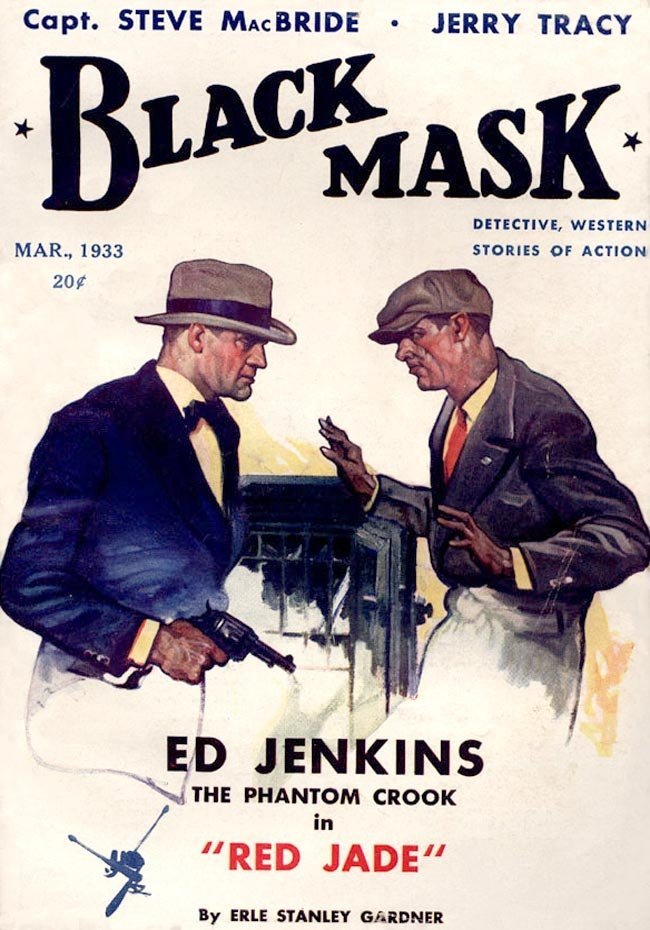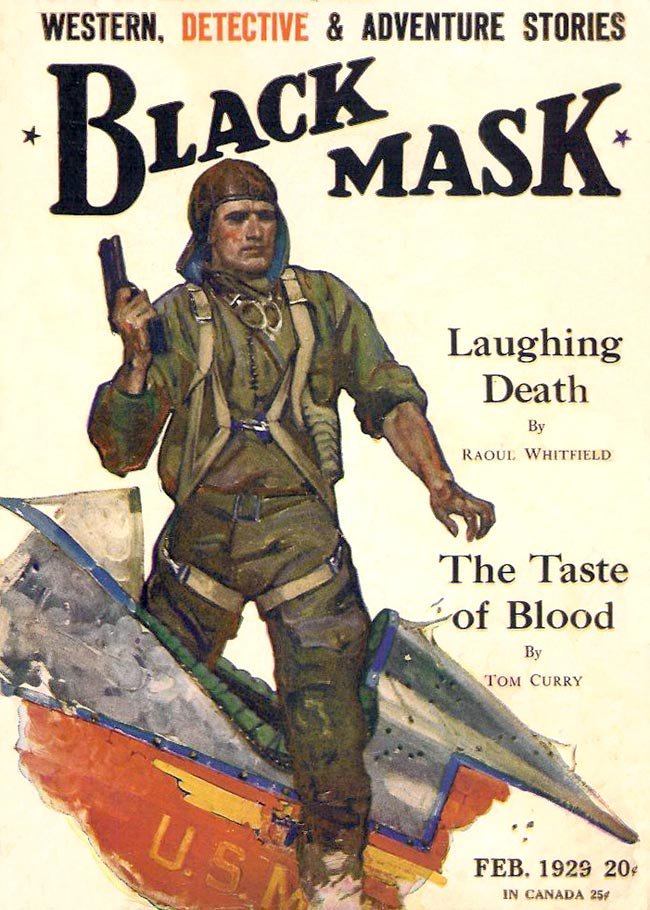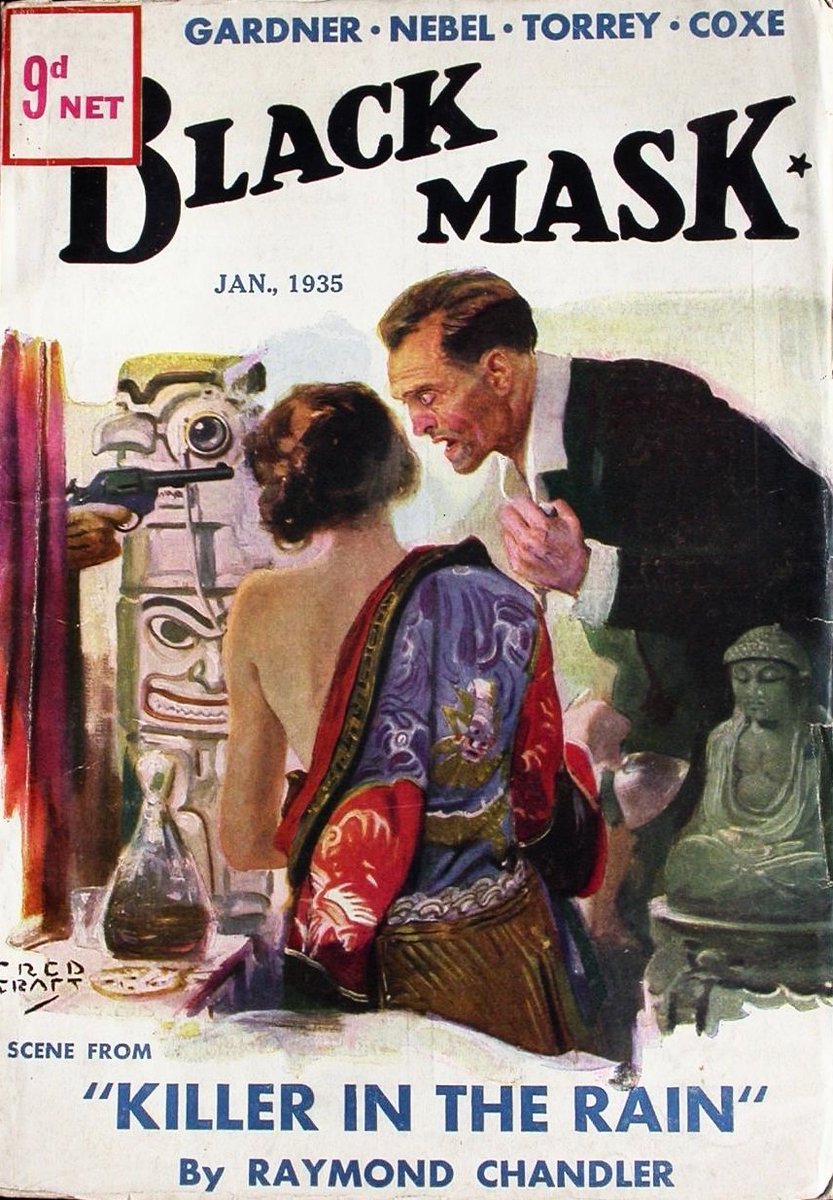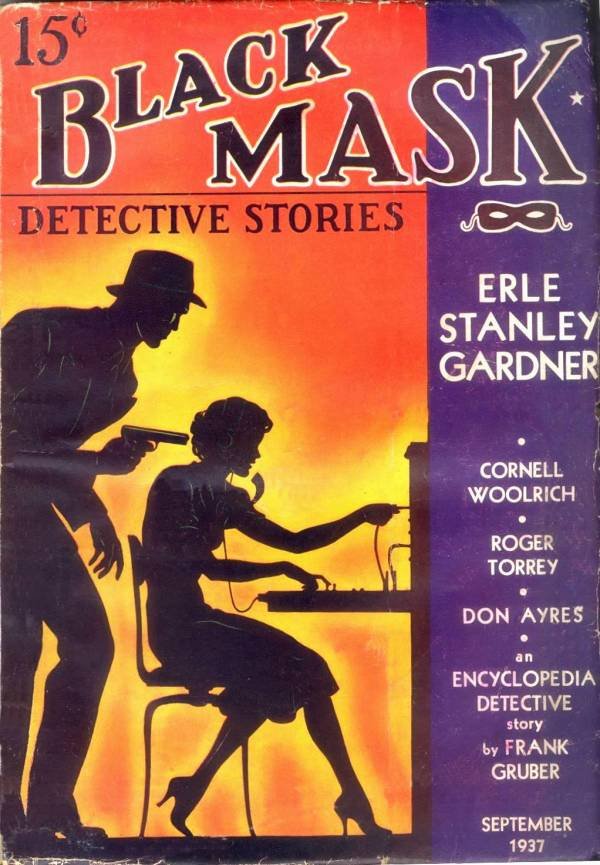Hard-boiled and Noir are two distinct - but overlapping - genres of crime fiction. So it's no surprise that both have their roots in the same soil: a pulp magazine that broke the mould. Twice.
Let's look back at the legendary Black Mask...
Let's look back at the legendary Black Mask...

"The Black Mask" started as an answer to a business problem: how could journalist H. L. Mencken and theatre critic George Jean Nathan keep their slick, influential but loss-making magazine 'The Smart Set' going?
Publishing a pulp title to subsidise it seemed to make sense.
Publishing a pulp title to subsidise it seemed to make sense.

Launched in April 1920 The Black Mask published a traditional mix of adventure, mystery, romance and detective stories. After eight issues, having made enough money, Mencken and Nathan sold the pulp title to its publishers and went back to the world of the slicks. 

The pulp magazine market had expanded rapidly in the 1920s. Unlike the upmarket slicks the pulps explored the anxieties of the time: crime, corruption and greed. They also made space for tough, realistic and colloquial writing. 



In 1922 George W Sutton Jr. took over as Black Mask's editor. A sensationalist with one eye on circulation figures he wanted his pulp "not to be read at night by people with weak nerves."
He also brought in three very influential writers...
He also brought in three very influential writers...

Dashiell Hammett was an ex-Pinkerton detective who had turned to writing, initially under the pen name Peter Collinson. He first wrote for Black Mask in 1923, and his Continental Op detective became a recurring character for the magazine. 

Race Williams was the other fictional detective regularly featured in Black Mask. Written by Carroll John Daly and first published in the controversial June 1923 'KKK special', Race Williams was "a halfway house between the cops and the crooks." He was an instant hit. 

Erle Stanley Gardner was a friend of Daly and began writing for Black Mask in 1923. His fictional character Ed Jenkins - "The Phantom Crook" - went on to appear in over 70 Black Mask stories. 

Philip Cody became Black Mask editor in 1924 and focused the title on hard-hitting gritty stories, be they western, crime or detective. He also built a strong relationship with the readers, asking them for ideas and feedback to help him shape the magazine. Sales rose. A lot. 

But it was the appointment of Captain Joseph T. Shaw as editor in 1926 that turned Black Mask into a hard-boiled sensation. Objective realism was his motto, and a sparse, crisp, tough-talking prose style became the hallmark of his editorial tenure. 

Shaw had returned to America from the war in Europe to find a country enthralled to gangsters, bootleggers, corrupt judges and dishonest politicians. He gave Black Mask a moral mission: to show how a few tough men could deal with a rotten world in their own hard-nosed way. 

As well as being a good editor Shaw was a great writing coach, helping to push talented authors to their full potential. As Raymond Chandler later said: "We wrote better for him than we could have written for anybody else." 

Raymond Chandler started writing for Black Mask in December 1933, eventually publishing 11 stories before moving to Dime Detective magazine in 1937 after Shaw was fired from Black Mask for refusing to cut salaries for writers. 

By 1935 Black Mask was in trouble: competition from other pulps had driven sales down from 103,000 in 1933 to just 63,000. Once Shaw was fired many Black Mask writers left for other magazines or for Hollywood.
It looked like the end...
It looked like the end...

But a new wave of crime fiction, darker and more psychological, came to the fore under the editorship of Fanny Ellsworth. She had previously edited one of the best-selling US pulps: Ranch Romances. It was a timely move. 

Ellsworth thought the hard-boiled style was too limiting and not in tune with the public taste. Writers such as Cornell Woolrich and Steve Fisher brought a more subjective, obsessive, emotionally driven style to crime stories - later dubbed Noir. 

Many women writers and editors worked in pulps: Florence Osborne was Black Mask's first editor; Erika Zastrow and Katherine Brocklebank were Black Mask writers; Daisy Bacon was editor at rival pulp Street & Smith's Detective Story. But Ellsworth was probably the most influential. 

When Ellsworth left in 1940 Black Mask turned away from psychologically centered noir crime thrillers and went back to hard-boiled stories. But the audience wasn't there any more. Radio and Hollywood proved too much competition and the magazine closed in 1951. 

The legacy of Black Mask is huge, and the stories are well worth re-reading. Few magazines can boast the cast of writers it published, let alone say they shaped two genres of fiction. And it was all yours for 20 cents an issue.
More pulp stories another day...
More pulp stories another day...

• • •
Missing some Tweet in this thread? You can try to
force a refresh























